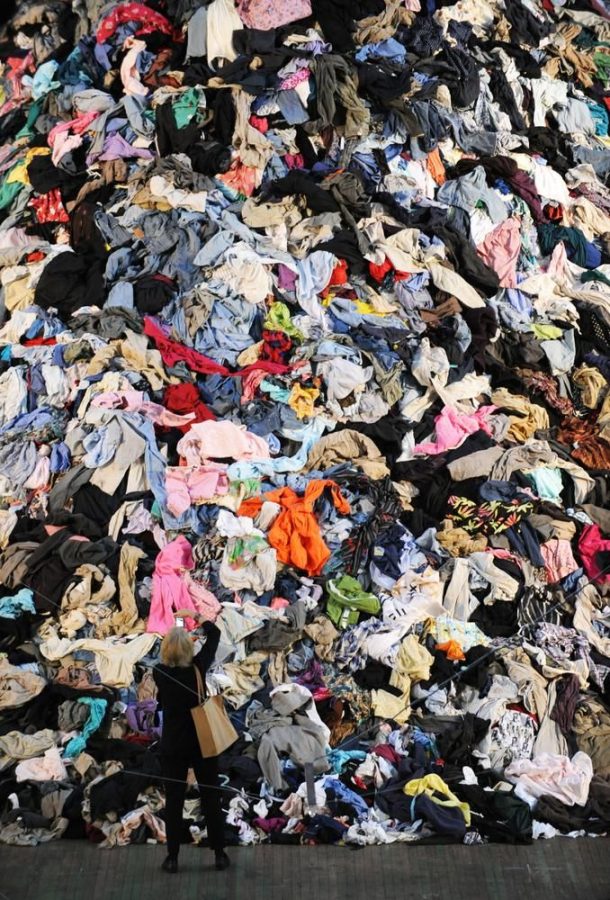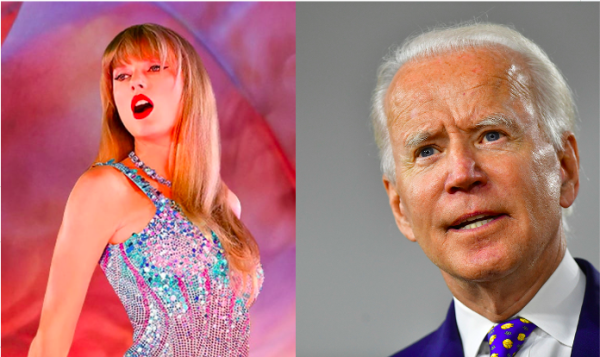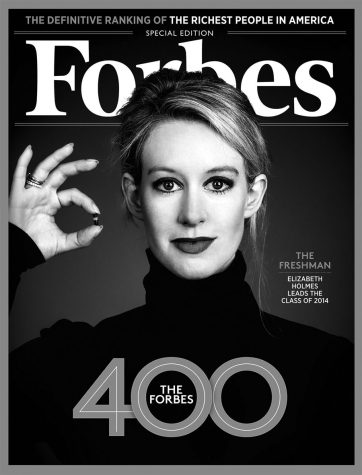The Dangers of Fast Fashion
Fast fashion makes clothes more accessible and affordable, but it comes at a communal cost that we all have to pay.
The definition of Fast Fashion, according to the Oxford English Dictionary, is “inexpensive clothing produced rapidly by mass-market retailers in response to the latest trends.”
In the last couple of years, fast fashion has made a name for itself in the public eye, and companies that produce fast fashion are growing in popularity. Even with the few scandals that follow the industry and the companies associated, the demand is increasing rapidly. Fast fashion companies are notorious for using (and I don’t use this word a lot) cheap, low quality, and dangerous ways to source their fabrics, textiles, and materials in general. They use exploitative labor and impose harsh conditions on the environment and communities. Beyond this, the main intrigue to the growing industry is its ability to pump out clothing like it’s going out of style (pun intended.) Probably because clothing is going out of style much faster now than ever. These companies use drastic and questionable measures to make sure that they are releasing clothes fast enough and affordable enough to stay on-trend, which a lot of the time is at the core of the many issues surrounding their frequent scandals.
The fashion industry has changed drastically in the last hundred years, and it looks nothing like what it did before; however, not all changes are good. Nowadays, we deal with issues like buying an obscene amount of clothes, stealing independent designers’ work just to pump out clothing quickly and on-trend enough for the market, and horrible and detrimental factory conditions for workers, which often deals with issues of its own such as low wages, unsafe conditions, and harassment.
According to The Problem with Fast fashion by Vogue, the story of fast fashion began in 1963, in a small town in Spain named Galacia. A man named Amancio Ortega Gaona launched a company that would go on to be named the most prominent fashion retailer on Earth by the New York Times and Forbes for a moment in history. The same industry dominator that made Armancio the seventh wealthiest person in the world at a net worth of over 70 billion dollars. That company today goes by the name of “Zara.”
Gaona pioneered the four necessary steps to run a successful fast fashion business, which are laid out in the book Fashionopolis by Dana Thomas. One is vertical integration, or when a company controls production and distribution; therefore, the entire product is made and sent to be sold in house. This cuts down on prices later and is a quick way to make a lot of clothes as fast as possible. Second is designer and customer communication: designers receive data regularly and analyze it to track what sells, whether we’re talking about the abstract idea of rose prints or something more specific like brown teddy bear jackets. People-watching or field research is another characteristic of these companies. This explains why the popular brand “Brandy Melville” may often have their employees ask you where you got your outfit when you walk into their stores or ask to take a picture of what you’re wearing. If they see a particular style/aesthetic become more prevalent, they’ll generally want to know their competitors and try to create a copy of what you’re wearing. Number three is design to retail production; the emphasis here is on fast. Clothing now takes a fraction of the time to make that it once did, most companies are able to put out at least 20 new products a week. Number four is outsourcing labor. Fast fashion is dependent on “affordable” labor and those savings are passed on to the customer. Nowadays, one in six people work in the fashion industry, and it’s bigger than ever. What’s worse is that this labor frequents developing countries many times when they don’t have a stable economy. The goal of fast fashion is to release trendy clothes at a low cost, therefore “democratizing fashion” in the words of Amancio.
Meanwhile, companies like Uniqlo, Stradivarius, Forever 21, H&M, Victoria Secret, ASOS, TOPSHOP, Urban Outfitters, Guess, Gap, Dolly and delicious, Boohoo, African Mall, Fashion Nova, Misguided, Massimo Dutti, Romwe, Shein, Primark, Ripcurl, Steve Madden, Benton, Pretty little thing, and so many more would provide thousands of jobs for workers in these countries; even though that’s not always a positive thing due to the working conditions and little pay. Workers have also been subject to poorly structured and unsafe factories that have a history of leading to the mass killing of thousands of workers annually. One of which would be the infamous, 2013 Dhaka garment factory collapse in Bangladesh, which resulted in 1,134 deaths. This was the largest garment factory disaster in history. The official story can be found in the New York Times report by Jim Yardley. Or for more on unfit working conditions, the documentaries “Luxury: Behind the mirror of high-end fashion” by DW and “The price of Fast Fashion” by BBC both share hands on research and much more information.
To get a grip on what fashion as a whole is like for the environment, here is some insight: 150 billion garments are produced each year, which is more than twenty garments per person on Earth (even though we know that not everyone on Earth has even ten garments in their possession.) 2.5 billion pounds of fabric waste were removed from the waste stream, according to the Council for Textile Recycling. The CTR also reports that Americans have increased the amount of clothing we own by over 60% since 2000, but we keep clothes for half as long as we used to; due to fast fashion, clothing is now disposable. According to the EPA’s report “Facts and Figures about materials, Waste and Recycling” Americans now throw away 80 lbs of clothes each year per person, that’s enough to fill not one, but three of those giant blue IKEA bags to the brim.
According to the Business Insider article by Morgan McFall-Johansson, and the New York Times article by Tatiana Schlossberg, the fashion industry produces more emissions than all international flights and maritime shipping combined. The United Nations’s website reveals that the fashion industry is responsible for 10% of the world’s carbon footprint, so there is no question that fashion is contributing to the effects of climate change. Clothing is recyclable, and many designers pride themselves on only using recycled fabrics. However, the amount of clothes we produce has far outstretched the amount we can reuse in time. The issue is that all those clothes that don’t get recycled in time get incinerated, leaving the environment in a worse state. If everyone just bought one used piece of clothing a year instead of new it could save about six pounds of C02 emissions, a Kron news story reveals that’s equivalent to removing half a million cars off the road for a year. The worst part is that a lot of Americans think they’re doing a service by donating tons of clothes each year. The truth is according to the Slate article “The afterlife of cheap clothes” by Elizabeth L. Cline one Salvation Army trashes 18 tons of unwanted clothing every three days. According to a CNBC news story; the excess of what charities can’t sell or giveaway ends up tightly packed in large warehouses where piles of banded together clothing is sold to developing countries; most of that clothing is in such a bad state that it ends up burned anyway after it’s bought. So fashion is not only hurting the environment but hurting entire economies.
The effects have gotten so bad that in April 2018, China banned the dumping of the world’s textile recycling and waste in their territories. The fashion industry is also one of the top polluters to clean water on the planet. Toxic chemicals used to dye and texture fabrics run off into nearby streams and are linked to congenital disabilities, miscarriages, cancer, poisoning, and a few times, death.
Specifically, this effect happens when dealing with a couple of groups or classes of chemicals, one of which is Polyfluoroalkyl substances. PFAS, according to Aria Bendix, “became popular in the US around the 1940s when manufacturing companies realized they could resist heat, grease, stains, and water. They’re often referred to as ‘forever chemicals’ since they can linger in the environment for thousands of years.” The C8 Science Panel published their relatively new findings and an epidemiological study linking this class of toxic chemicals to a slew of medical issues, which include testicular cancer, liver problems, and developmental defects. They note that most humans that would come into contact with these toxins would access them through contaminated drinking water.
Business Insider additionally reports that other chemicals (some of which are banned and illegal to use in manufacturing in the US) such as carcinogenic azo dyes, phthalates, skin irritation causing chromium, and lead have been found in garments ranging from baby bibs to blue jeans. These don’t have to seep into bodies of water to be harmful; the compound simply rubbing off on your skin can be very damaging. These products have even been found at large chains in the US, such as Wal-Mart. They are often used as a cheap alternative to make clothing more durable, and those who live in poorer countries with limited access to less harmful options are the most at risk. The second is those of us who willingly buy mostly fast fashion garments. Forever 21’s lawsuit involving chemicals found in their clothes that were causing customers to have severe skin irritation is a great example of that.
So why is hardly anything being done?
Now some designers are catching on to the increasing issue of perpetuating the harmful practices of fast fashion. These designers are creating fully sustainable fashion companies, from the fabric and production, to the delivery process. The only issue is that it’s ridiculously expensive and uncommon. These brands are often designer or independent and solely online. The brands Stella McCartney, Theory, Alabama Chanin, Eileen Fisher, People Tree, are all examples of this. Who would be inclined to shop organically when the price of a plain white t-shirt is often over $200? Some more affordable, ethical brands are making their way in the industry as well,like “Everlane,” which are pioneering the “clean” fashion initiative of today’s time with a sustainable approach for an affordable cost. “Allbirds” is another sustainable brand that creates comfortable, quality sneakers by using recycled plastic bottles to make their shoe laces, and organic wool from merino sheep in New Zealand (where the company is based.) Or there are online websites dedicated to selling exclusively thrifted or vintage clothing like “Thredup.”
Fast fashion is not ideal. However, the thrifted and sustainable clothing movement is actively trying to change that. It’s heartwarming to know that there are brands out there with trendy clothing, affordable prices, and the environment in mind. Hopefully many of us will take advantage of those.
Hi, I’m Chandler. I’m a senior and the Literary Magazine and Arts Editor at Wildezine. This is my fourth year on Wildezine and my 13th year at SSFS....










